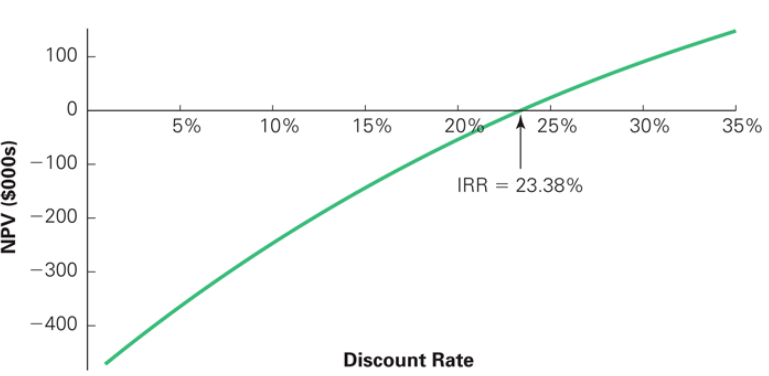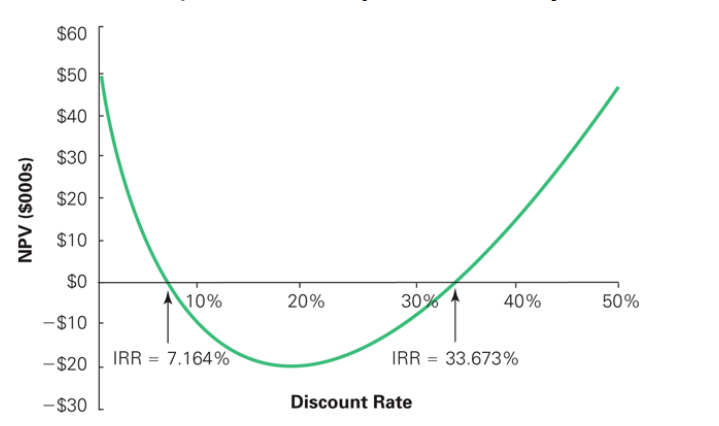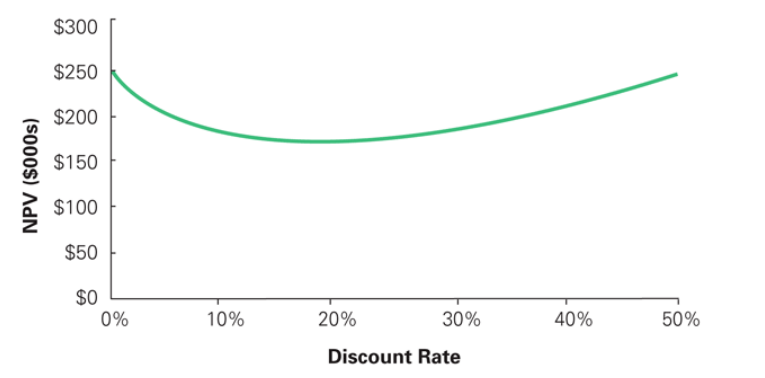Internal Rate of Return (IRR) is used to approximate the profitability of possible investments.
The discount rate, which makes Net Profit Value (NPV) zero, is IRR. Note IRR is the annual return rate that equates NPV to zero.
The higher the IRR, the investment will be more desirable.
To calculate IRR

One should accept the deal if IRR is more than the cost of capital.
The net cash flow will also be high if the project is high.
NPV= 1,000,000 – 500,000/1.1 -500,000/1.12 -500,000/1.13 = -$ 243.426
NPV is negative; therefore, one should decline the deal.
IRR vs. NPV
IRR is the point where NPV = 0
When benefits of investment happen before cost, NPV is an accumulative function of a discount rate.

To get NPV
550,000 – 500,000/1+r – 500,000/ (1+r) 2 – 500,000/ (1+r) 3 – 1,000,000/ (1+r) 4
Set NPV to be 0
So that one can solve IRR.
IRR = 7.164% or IRR = 33.673%
IRR rule do not apply because IRR is more than one.
One should decline the deal because the cost of capital is 10%
The publisher increases the advance to $750,000. That is if the book is published in four years to a total of $ 1,000,000 + $ 750,000 = $ 1,750,000. With this cash flow, IRR is absent. Therefore,
NPV = 0 because there is no discount rate.
IRR does not exist because NPV is positive for all discount rate values. IRR rule does not apply (Magni & Marchioni, 2020).

Reference
Magni, C. A., & Marchioni, A. (2020). Average rates of return, working capital, and NPV-consistency in project appraisal: A sensitivity analysis approach. International Journal of Production Economics, 229, 107769. Web.